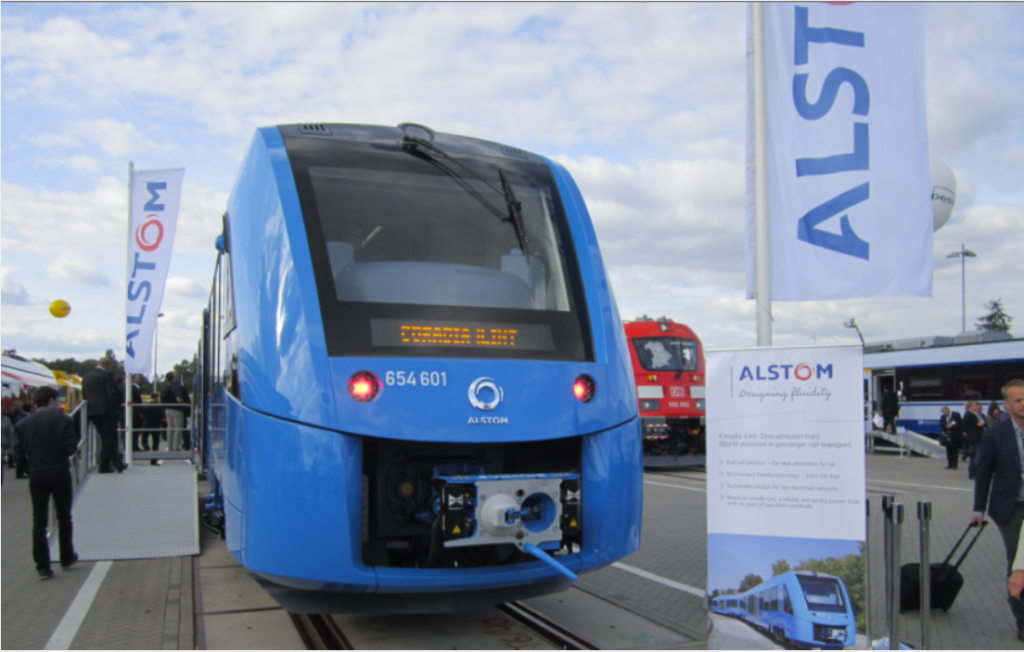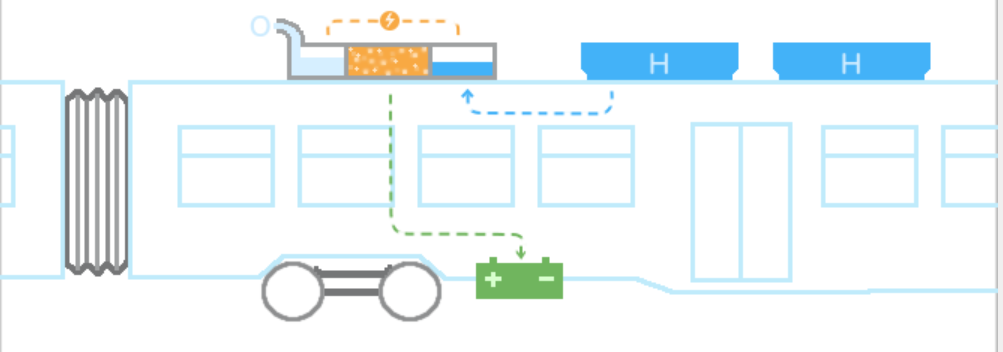
The Coradia iLint, a hydrail passenger train, is being designed by Alstom, a French corporation, and is poised to become the next big thing in environmentally friendly transportation. It is a hydrogen-powered train, therefore the only emissions it produces are steam and condensed water. It also creates very little noise—the sound of its wheels and the movement of the air are the only sounds it produces.
December 2017 is when the Coradia iLint is scheduled to debut in Lower Saxony, Germany, after testing by German transport authorities in the autumn. It will operate on the Buxtehude-Bremervörde-Bremerhaven-Cuxhaven line and can accommodate up to 300 people, 150 of whom will be seated. various European nations including the Netherlands, Denmark, and Norway, as well as various regions of Germany, have already shown interest.
Function
A hydrogen fuel tank located on the train’s roof supplies hydrogen to a fuel cell. There, hydrogen and oxygen mix to create electrical energy, which is then sent to enormous lithium-ion batteries to power the car. In order to retain the kinetic energy for later use, the batteries also gather it when the train brakes. Last but not least, an auxiliary converter transforms energy from the battery or fuel cell for use in the train’s air conditioning system, doors, electronic displays, lights, and other components. Windmills will generate the hydrogen gas that will be utilized as fuel.

Vehicles that run on hydrogen
Around the globe, there are already hydrogen vehicle prototypes, such as hydrogen automobiles and hydrail railcars and cable cars in China and Japan, respectively. Furthermore, since the 1970s, NASA has powered its rockets using liquid hydrogen. But, the Coradia iLint has a larger fuel capacity than the other car prototypes, which enables it to go significantly farther—nearly 500 miles (800 km) at 87 mph (140 km/h) with a full tank. It is the first hydrail vehicle to travel great distances as a result.
Implementation challenges
The person who came up with the name “hydrail,” Stan Thompson, notes that introducing hydrail vehicles would present certain difficulties. The character of the railway business [sic] is that it is quite resistant to change, in his own words. You want whatever you’ve invested in to last for a very long time so you can get your money back. This implies that [the industry’s] resistance to change increases with plan size. But once the Coradia iLint is up and going, perhaps, more and more nations will find use for it.
Language notes1. To indicate that the original author made a mistake, the acronym [sic] is used inside a quotation. The quotation in this instance need to say, “The nature of the railway industry is that…”
Another way to add information not stated by the original author of a statement is to use brackets [], in this example, [the industry].



